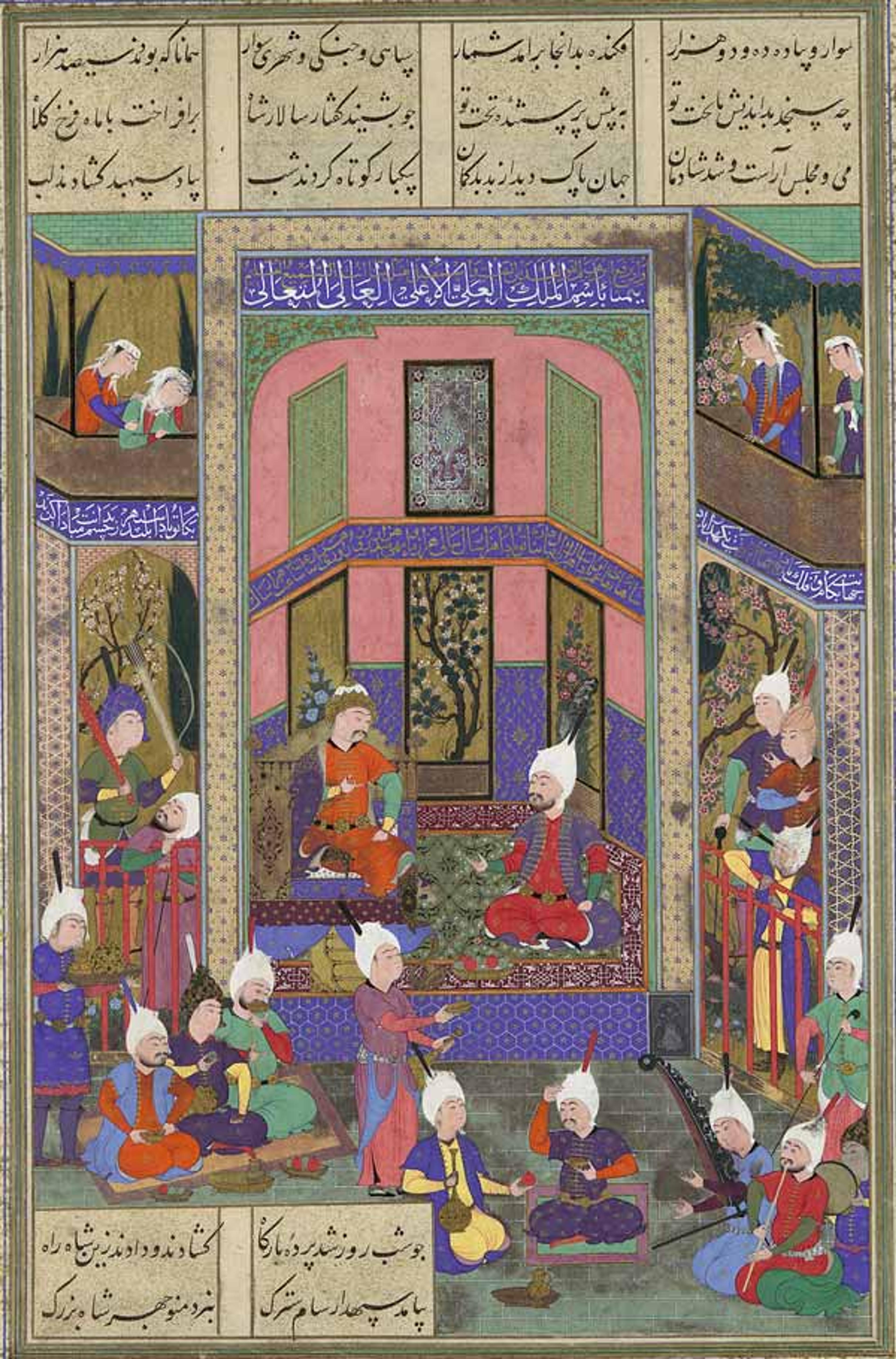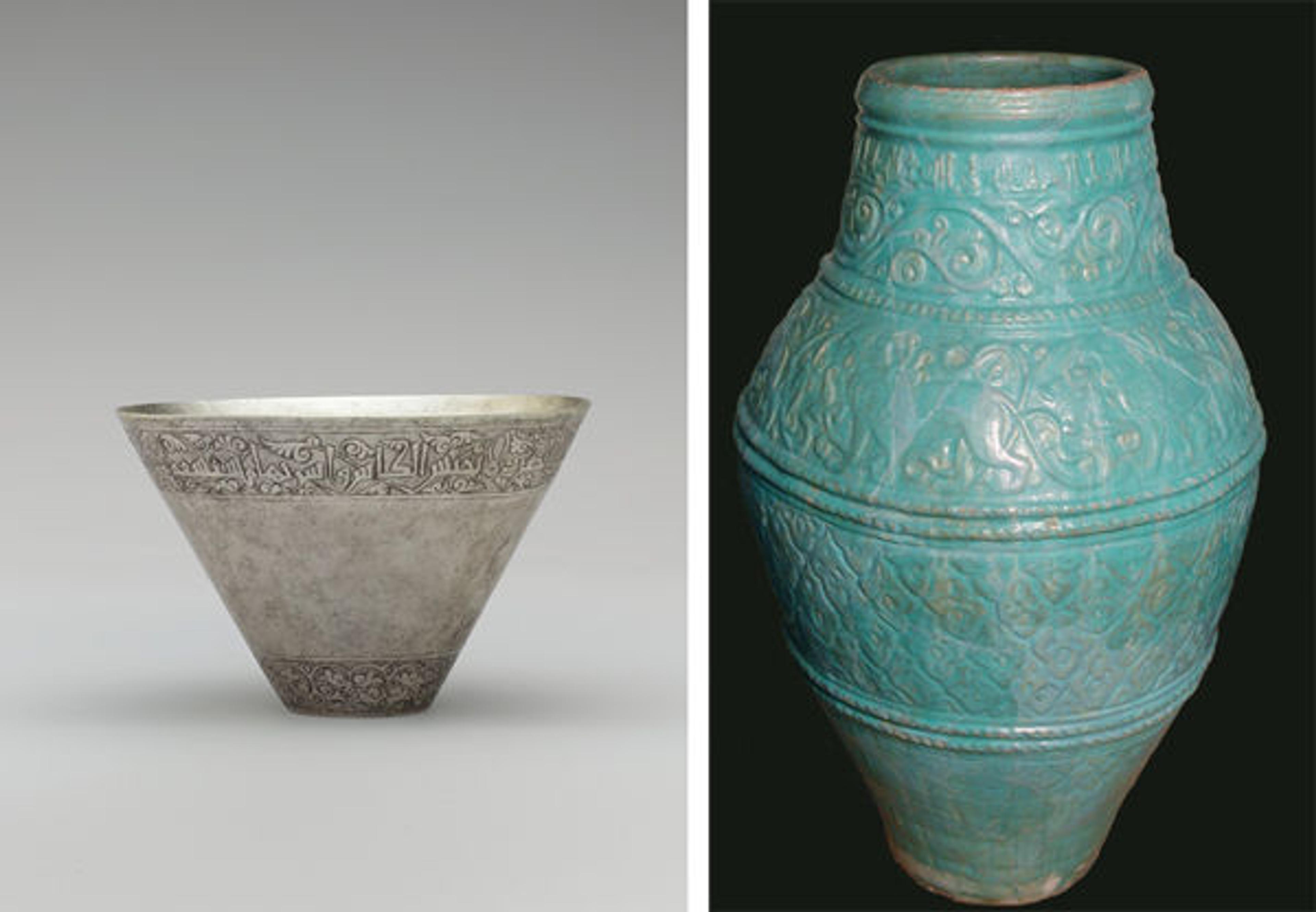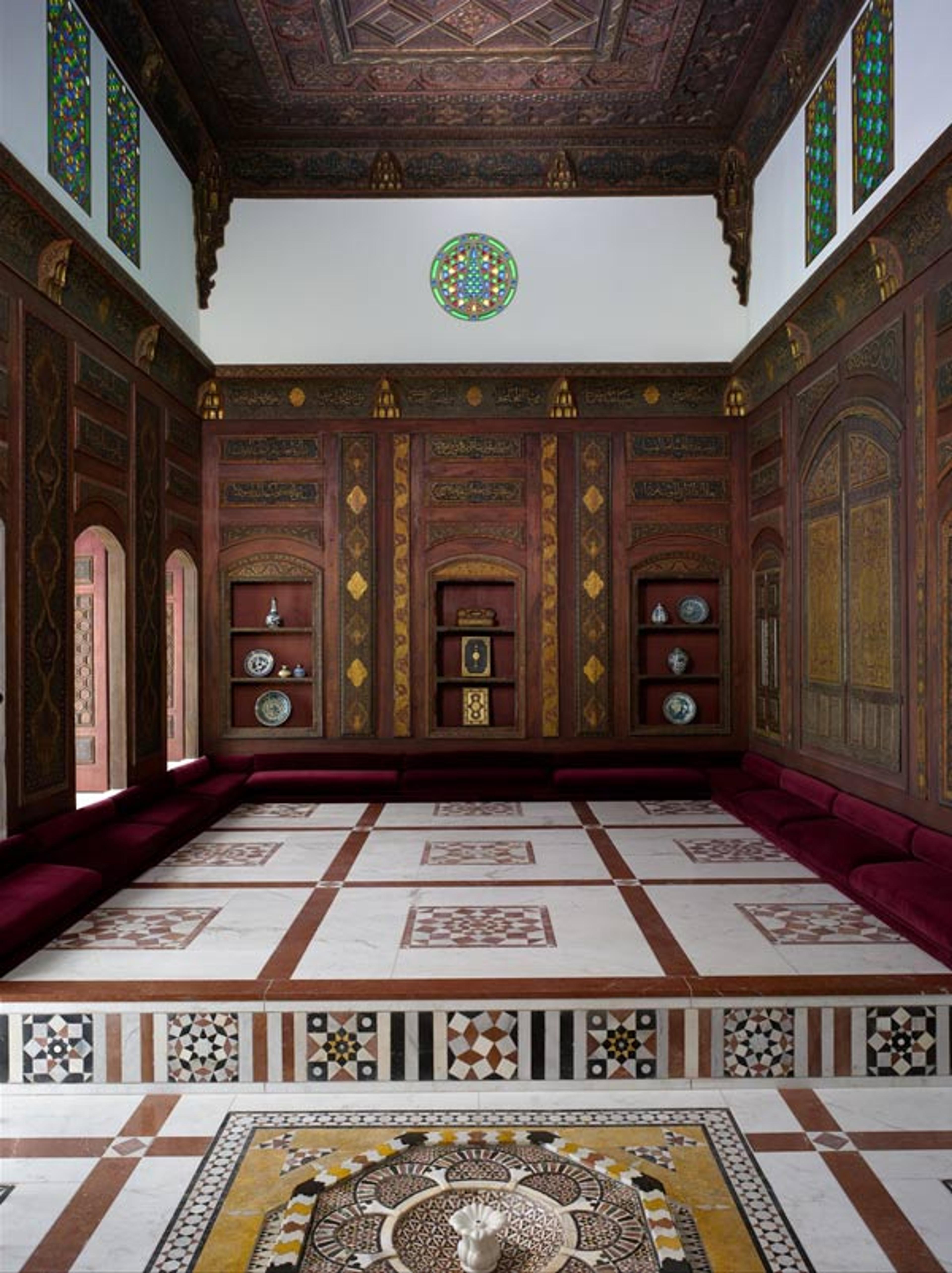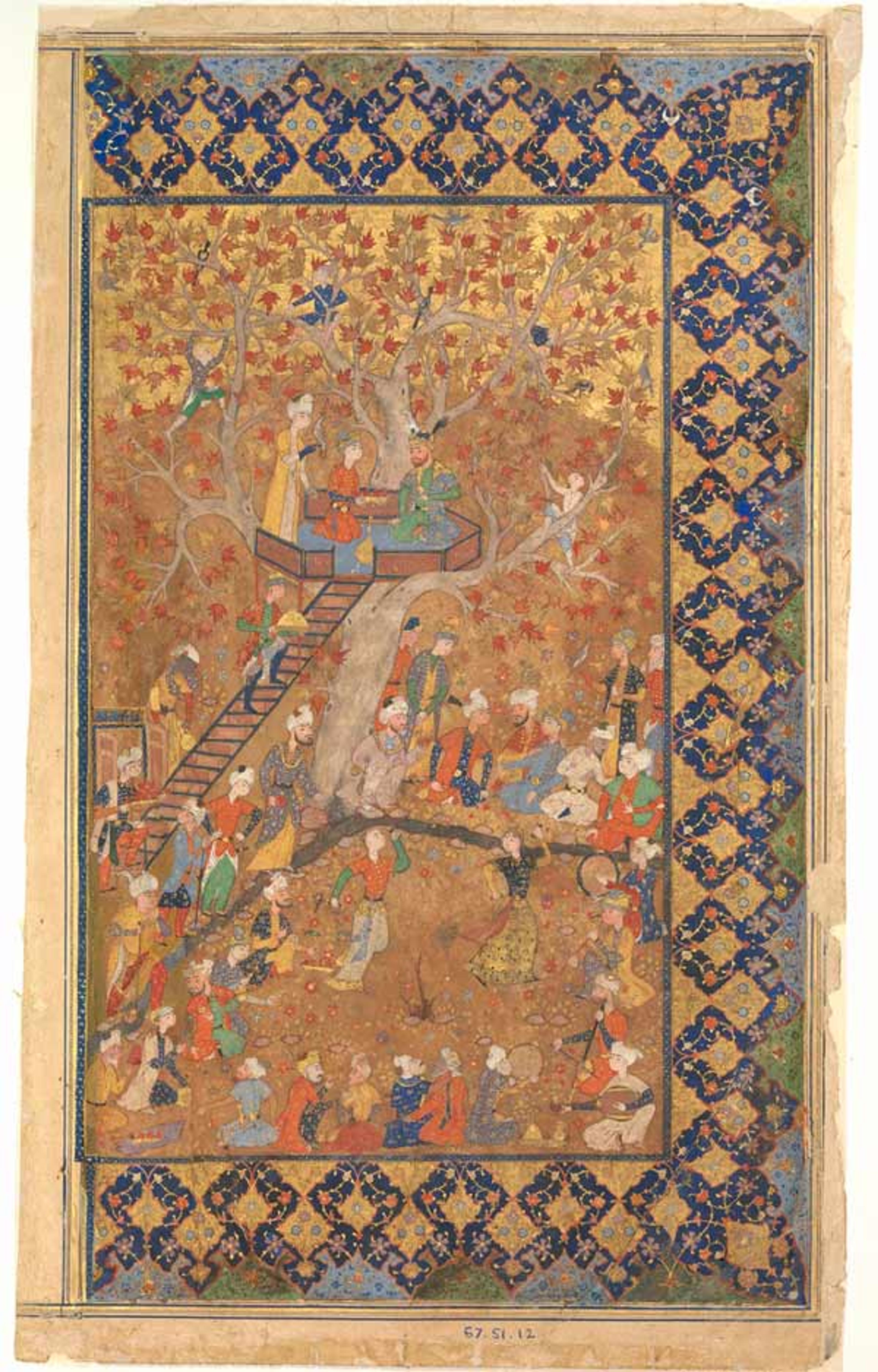A Ninth-Century Miss Manners: Dining Etiquette in Abbasid Iraq

Feasting scenes feature prominently in the Shahnama, the epic poem that tells the story of Iranian kingship. Abu'l Qasim Firdausi (935–1020). "Manuchihr Welcomes Sam but Orders War upon Mihrab", Folio from the Shahnama (Book of Kings) of Shah Tahmasp (detail), ca. 1525. Painting attributed to 'Abd al-'Aziz (active first half 16th century). Iran, Tabriz. Opaque watercolor, ink, silver, and gold on paper. The Metropolitan Museum of Art, New York, Gift of Arthur A. Houghton Jr., 1970 (1970.301.9)
«With the weather getting colder and Thanksgiving now upon us, my mind has turned to food. Hearty soups, roasted vegetables, and freshly baked bread warm my spirits during the winter months, and there is little I enjoy more than inviting friends and family to join me for meals.
Food and drink are central to celebrations throughout the world, and objects in the Islamic Art collection can tell us so much about people's lives. The tradition of feasting to commemorate important events dates back to pre-Islamic times, both in the Middle East and the rest of the world. The Islamic galleries are filled with serving dishes, storage jars, and drinking vessels that provide a window into the everyday life and celebrations of the many Islamic dynasties represented here.»

Left: The Arabic calligraphy that runs along the rim of this cup celebrates the pleasures of drinking. Wine cup, second half 10th–11th century. Verses by Ibn Sukkara al-Hashimi (d. A.H. 385/A.D. 995–6). Iran. Silver; fire gilded, hammered, and chased. The Metropolitan Museum of Art, New York, Harris Brisbane Dick Fund, 1964 (64.133.2). Right: Earthenware jars like this one would have held grains or wine. Large jar, 12th–13th century. Iran. Earthenware; molded and glazed. The Metropolitan Museum of Art, New York, Fletcher Fund, 1939 (39.189)
Typically, dinner guests ate from a communal bowl, with each person taking the portion directly in front of him. Generosity and hospitality were highly valued, as the ninth-century Iraqi author Abu 'Uthman al-Jahiz attests in Book of Misers ("Kitab al-bukhala" in the original Arabic). Jahiz uses short anecdotes, witty aphorisms, and poems to instruct the reader in proper etiquette.

The Persian inscription that fills the cavetto of this bowl reads: "As long as the soup is good, do not worry if the bowl is pretty!" Bowl with Persian inscription, dated A.H. 779/A.D. 1377. Iran. Stonepaste; blue and black painted under transparent glaze. The Metropolitan Museum of Art, New York, Purchase, Anonymous Gift, 1970 (1970.28)
One of my favorite sections of this book, "A Glossary of Abu'l Fatik's Jargon," lists the types of ill-mannered guests who might appear at a dinner party. The pot-picker takes from the pot before the food is served, the bread-sponger uses his bread to soak up the fat before anyone else has a chance, and the stone-switcher mixes his date pits with those of the person next to him so as to disguise his own gluttony. There are even words for double-dippers ("biters"), party-crashers ("guest's guests"), and those who don't wash their hands before tucking into the food.

A wealthy family in eighteenth-century Damascus received guests in this winter reception room (qa'a). Damascus Room, dated A.H. 1119/A.D. 1707. Syria, Damascus. Wood (poplar) with gesso relief, gold and tin leaf, glazes and paint; wood (cypress, poplar, and mulberry), mother-of-pearl, marble and other stones, stucco with glass, plaster ceramic tiles, iron, brass. The Metropolitan Museum of Art, New York, Gift of The Hagop Kevorkian Fund, 1970 (1970.170)
Even with so many ways to offend one's dining companions, meals were lively and festive occasions. This winter reception room was part of an affluent Damascus family's home during the late Ottoman period. Guests reclined on sofa cushions while drinking coffee and smoking from waterpipes. At mealtimes, they would gather around large trays of food that were set on the floor or on low tables.

Music, dance, and conversation enliven this feasting scene. Amir Khusrau Dihlavi (1253–1325). "Entertainment in a Garden," Folio from a Khamsa of Amir Khusrau Dihlavi, Matla' al-Anvar, second half 16th century. Iran, Shiraz. Opaque watercolor and gold on paper. The Metropolitan Museum of Art, New York, Cora Timken Burnett Collection of Persian Miniatures and Other Persian Art Objects, Bequest of Cora Timken Burnett, 1956 (57.51.12)
Be sure to avoid Jahiz's reproach by behaving properly at your upcoming dinner parties. And don't forget to enjoy the food and company!
Julia Cohen
Julia Cohen is a research assistant in the Department of Islamic Art.